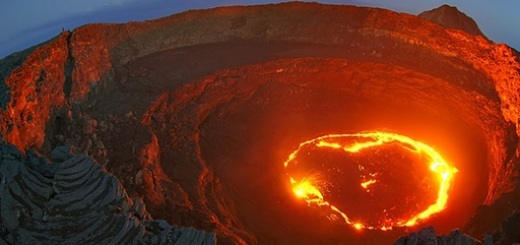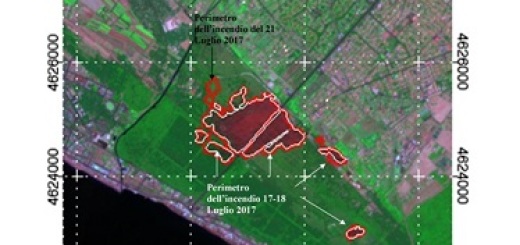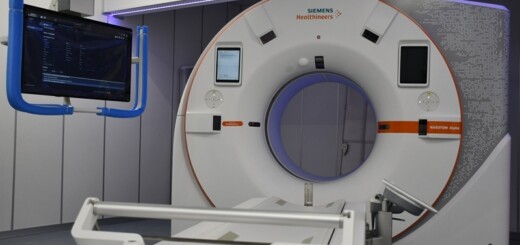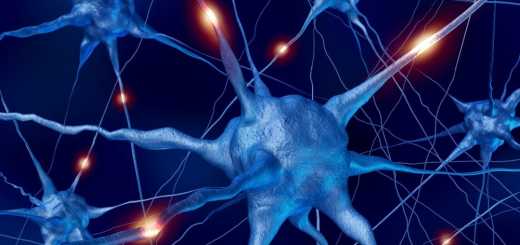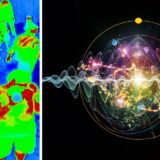Terremoti in Italia, registrati oltre 16mila eventi nel 2021

Nel 2021 confermata la media di 44 terremoti al giorno localizzati dalle Sale di Sorveglianza operative h24 dell’INGV: quasi 1 terremoto ogni 30 minuti
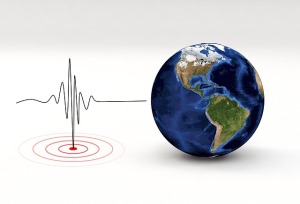
Roma, 13 gennaio 2022 – 16.095 sono i terremoti sul territorio italiano e nelle zone limitrofe localizzati dalla Rete Sismica Nazionale nel corso del 2021: una media di 44 terremoti al giorno, ovvero in media un evento ogni mezz’ora.
“Anche nel 2021 si è confermato il trend degli ultimi tre anni, con i terremoti più forti localizzati al di fuori del territorio italiano – afferma Alessandro Amato, sismologo dell’INGV – Come si vede dalla mappa pubblicata su INGVterremoti, gli eventi sismici che hanno fatto registrare una magnitudo pari o superiore a 5.0 sono avvenuti in Algeria, in Croazia e nel Mare Adriatico, anche se alcuni di essi hanno avuto un risentimento anche nel territorio italiano”.
“Il 6 gennaio del 2021 – prosegue Amato – è avvenuto un terremoto di magnitudo 5.2 a pochissimi chilometri da Petrinja in Croatia, connesso alla sequenza sismica iniziata alla fine del 2020 con un terremoto di magnitudo 6.3 del 29 dicembre nella stessa località. Il 18 marzo 2021 sulle coste dell’Algeria, inoltre, si sono registrati due terremoti di magnitudo 6.2 e 5.3. Per il primo terremoto algerino, il Centro Allerta Tsunami dell’INGV (CAT-INGV) ha emanato un’allerta tsunami di livello arancione per le coste dell’Algeria prossime all’epicentro e un messaggio informativo per le altre coste del mar Mediterraneo, Italia compresa. Gli ultimi giorni del mese di marzo sono stati caratterizzati dalla sequenza sismica in Adriatico centrale, iniziata il 27 marzo con il terremoto di magnitudo 5.2 localizzato a circa 80 km dalle coste della Puglia garganica e a una trentina di chilometri dall’isola croata di Lastovo”.
Il numero di terremoti localizzati in Italia nel 2021 è di poco inferiore a quello del 2020 e si mantiene stabile dal 2019. Numeri inferiori a quelli registrati negli anni 2016-2017-2018 caratterizzati dalla sequenza sismica in Italia centrale. Il contributo di questa sequenza iniziata il 24 agosto 2016, in termini di numero di eventi, è comunque importante anche nel 2021 rappresentando circa il 30% del totale della sismicità in Italia.
“Il primo terremoto italiano del 2021 si è verificato nel modenese, a Pavullo nel Frignano, 1 ora e 3 minuti dopo l’inizio del nuovo anno. L’ultimo, invece, lo abbiamo localizzato a Sefro, in provincia di Macerata, a meno di mezz’ora dalla mezzanotte: entrambi hanno fatto registrare una magnitudo inferiore a 2.5 – spiega Maurizio Pignone, geologo dell’INGV – La Sardegna si conferma la regione con il minor numero di terremoti, mentre la Sicilia ha avuto oltre 80 eventi di magnitudo pari o superiore a 2.5, più di tutte le altre regioni. Se, però, contassimo anche i terremoti molto piccoli, il primato sarebbe condizionato dalla densità della rete sismica e “vincerebbero” Marche e Umbria con rispettivamente circa 3.000 e 5.000 eventi”.
“Il terremoto più forte è avvenuto in Sicilia, presso Motta Sant’Anastasia (CT), il 23 dicembre 2021, all’interno di uno sciame sismico con oltre 50 eventi nel giro di tre giorni ed è stato caratterizzato da una magnitudo 4.3. Il più piccolo, invece, è stato registrato vicino Gubbio (PG) il 13 agosto 2021 con una magnitudo che, in questo caso, è stata 0.0, localizzato dalla Rete Sismica Nazionale in un’area d’Italia dove la sensibilità della rete è massima”.
I terremoti che hanno caratterizzato il 2021 sono “navigabili” con la mappa interattiva e con una story map di tipo “dashboard” realizzata dal Team di INGVterremoti.
“Con la dashboard si può navigare tra tutti i terremoti del 2021 su una mappa interattiva e interrogare ogni singolo terremoto per visualizzare i relativi parametri ipocentrali – evidenzia Maurizio Pignone – Inoltre, con le infografiche il pubblico interagisce con la mappa, selezionando le aree e visualizzando le informazioni sulla magnitudo massima, sulla loro distribuzione nei 12 mesi dell’anno e tanto altro”.
“La rappresentazione grafica degli eventi sismici verificatisi in Italia è uno strumento fondamentale che l’INGV mette a disposizione dei cittadini e della comunità scientifica per incrementare la consapevolezza della fragilità dei nostri territori lungo tutta la penisola, oltre che a dare uno strumento di ricerca agli studiosi di tutto il mondo. Nonostante il perdurare della pandemia, la sorveglianza sismica effettuata dall’INGV non si è fermata, neanche un secondo. La consapevolezza della natura del nostro territorio, della sua sismicità e della sua conformazione geologica è un’attività informativa che l’Istituto persegue costantemente con continue azioni di divulgazione della ricerca e del monitoraggio come la Giornata della Alfabetizzazione Sismica promossa dall’INGV nel mese di gennaio di ogni anno: la Terra è un pianeta vivo, l’Italia continuerà sempre ad avere terremoti e dobbiamo investire nella loro maggiore conoscenza per difenderci meglio in futuro”, conclude il prof. Carlo Doglioni, Presidente dell’INGV.
*******
Earthquakes in Italy, over 16 thousand recorded in 2021
In 2021, the average of 44 earthquakes per day localized by the 24-hour surveillance rooms of the INGV confirmed: almost 1 earthquake every 30 minutes
Rome, January 13, 2022 – 16,095 are the earthquakes in Italy and in neighboring areas located by the National Seismic Network in 2021: an average of 44 earthquakes per day, or on average one event every half hour.
“The trend of the last three years was also confirmed in 2021, with the strongest earthquakes located outside the Italian territory – says Alessandro Amato, INGV seismologist – As can be seen from the map published on INGVterremoti, the seismic events that recorded a magnitude equal to or greater than 5.0 took place in Algeria, Croatia and the Adriatic Sea, even if some of them had a resentment also in the Italian territory”.
“On January 6, 2021 – continues Amato – an earthquake of magnitude 5.2 occurred a few kilometers from Petrinja in Croatia, connected to the seismic sequence that began at the end of 2020 with an earthquake of magnitude 6.3 on December 29 in the same location. Furthermore, on March 18, 2021, two earthquakes of magnitude 6.2 and 5.3 were recorded on the coasts of Algeria. For the first Algerian earthquake, the INGV Tsunami Warning Center (CAT-INGV) issued an orange level tsunami warning for the coasts of Algeria near the epicenter and an information message for the other coasts of the Mediterranean Sea, Italy including. The last days of March were characterized by the seismic sequence in the central Adriatic, which began on 27 March with the 5.2 magnitude earthquake located about 80 km from the coast of Gargano Puglia and about thirty kilometers from the Croatian island of Lastovo”.
The number of earthquakes located in Italy in 2021 is slightly lower than in 2020 and has remained stable since 2019. Numbers lower than those recorded in the years 2016-2017-2018 characterized by the seismic sequence in central Italy. The contribution of this sequence that began on 24 August 2016, in terms of the number of events, is however important also in 2021, representing about 30% of the total seismicity in Italy.
“The first Italian earthquake of 2021 occurred in the Modena area, in Pavullo nel Frignano, 1 hour and 3 minutes after the start of the new year. The last one, however, we located in Sefro, in the province of Macerata, less than half an hour from midnight: both recorded a magnitude of less than 2.5 – explains Maurizio Pignone, geologist at INGV – Sardinia is confirmed as the region with the lowest number of earthquakes, while Sicily has had over 80 events with a magnitude of 2.5 or greater, more than all other regions. However, if we also counted very small earthquakes, the primacy would be conditioned by the density of the seismic network and Marche and Umbria would ‘win’ with approximately 3,000 and 5,000 events respectively”.
The strongest earthquake occurred in Sicily, near Motta Sant’Anastasia (CT), on 23 December 2021, within a seismic swarm with over 50 events within three days and was characterized by a magnitude 4.3. The smallest, however, was recorded near Gubbio (PG) on 13 August 2021 with a magnitude which, in this case, was 0.0, located by the National Seismic Network in an area of Italy where the sensitivity of the network is maximum.
The earthquakes of 2021 are “navigable” with the interactive map and with a “dashboard” story map created by the INGVterremoti Team.
“With the dashboard you can navigate through all the 2021 earthquakes on an interactive map and interrogate each earthquake to view the related hypocentral parameters – highlights Maurizio Pignone – Furthermore, with the infographics the public interacts with the map, selecting the areas and displaying information on the maximum magnitude, on their distribution in the 12 months of the year and much more”.
“The graphic representation of the seismic events that occurred in Italy is a fundamental tool that the INGV makes available to citizens and the scientific community to increase awareness of the fragility of our territories throughout the peninsula, as well as providing a research tool for scholars from all over the world. Despite the persistence of the pandemic, the seismic surveillance carried out by the INGV did not stop, not even for a second. Awareness of the nature of our territory, its seismicity and its geological conformation is an informative activity that the Institute constantly pursues with continuous research and monitoring dissemination actions such as the Seismic Literacy Day promoted by INGV in the month of January of each year: the Earth is a living planet, Italy will always continue to have earthquakes and we must invest in their greater knowledge to better defend ourselves in the future”, concludes prof. Carlo Doglioni, President of INGV.


